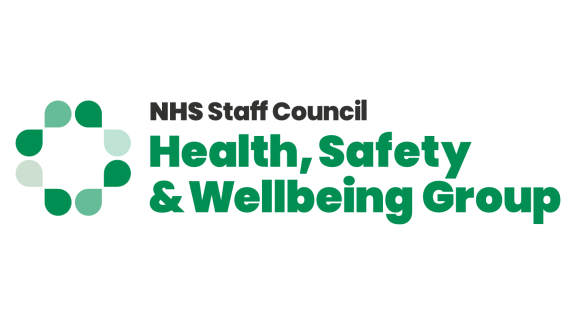- Statement of intent
The policy should include a statement at the beginning that makes a commitment to support staff who are experiencing domestic violence and abuse.
- Context
Include information about the context of the policy and why organisations should support staff experiencing domestic violence and abuse. You can link it to the Domestic Abuse Act 2021 (England), Domestic Abuse and Civil Proceedings Act 2021 (NI) it covers physical violence, non-physical abuse (including coercive and controlling behaviour) and sexually abusive behaviour. Further information about occupational health and safety, as under the Health and Safety at Work Act 1974 and the Management of Health and Safety at Work Regulations 1999 organisations have legal responsibilities to protect the health, safety, and welfare of their employees.
- Definitions
The policy should include a definition of domestic violence such as: Any incident or pattern of incidents of controlling, coercive or threatening behaviour, violence, or abuse between those aged 16 or over who are or have been intimate partners or friend or family members regardless of sex, class, race, disability, sexual orientation, gender identity or age.
Domestic abuse is the abuse of power and control over one person by another. It can take many different forms, including physical, sexual, emotional, verbal, and financial abuse. Domestic violence includes, but is not limited to:
a) Physical abuse: slapping, pushing, kicking, stabbing, damage to property or items of sentimental value, female genital mutilation, attempted murder or murder
b) Sexual : any non-consensual sexual activity, including rape, sexual assault, coercive sexual activity, or refusing safer sex
c) Coercive control: controlling whom you see or where you go, what you wear or what you do, stalking, imprisonment, forced marriage
d) Emotional/psychological abuse: intimidation, social isolation, verbal abuse, humiliation, constant criticism, enforced trivial routines
e) Economic abuse: stealing, depriving or taking control of money, running up debts, withholding benefit books or bank cards
f) Honour abuse: relating to alleged or perceived breaches of the family and/or community’s code of behaviour.
g) Technology-facilitated abuse is a form of controlling behaviour that involves the use of technology as a means to coerce, stalk or harass another person.
- Responsibilities
The policy should stress the employee’s right to confidentiality and discretion around personal details of employees (addresses, telephone numbers, work locations, shift times). However, the policy may want to make clear that in circumstances of child protection, or the protection of vulnerable adults, it may be that the organisation cannot guarantee confidentiality in these cases.
- Supporting staff
The policy may wish to have a designated point of contact (one or two people) who are specially trained who staff can go to first. It is important to stress that this point of contact is not a counsellor but should be responsible for listening to the employee and providing information and support in a sensitive and non-judgemental manner.
It may be the case that the employee’s first point of contact is their trade union representative; their line manager or human resources staff. These staff groups should be familiar with the organisation’s domestic violence and abuse policy, so they understand how to support the member of staff.
Employers should provide a secure workplace and ensure relevant staff have appropriate domestic violence and abuse training. The policy should outline the different types of special arrangements that could be put in place for an employee experiencing domestic violence and abuse for example:
- if domestic violence is disclosed, the employer should consider undertaking a work place risk assessment to ensure that the potential risk to the employee and work colleagues is minimised
- special leave - some workplaces may need to allow for special paid leave (10 days special paid leave is available for employees in Northern Ireland), including extended leave if the employee needs to go to a refuge or move away, to enable employees time to visit their solicitor, the police, their GP and/or others.
- performance and productivity - the policy may make reference to the fact that survivors of domestic violence may have performance or productivity issues and the organisation should deal with these sympathetically.
- employers should also be sympathetic in applying sickness monitoring procedures.
- security measures - for example ensuring access to some buildings is only for staff and authorised visitors.
- workplace changes - if practical consideration of a permanent or temporary change of workplace.
- shift changes - if practical, a consideration of changes to shift patterns and times.
- flexible working including relocation of place of work
- transport - consideration of support with transport arrangements to and from work, including parking.
- lone working – staff working alone in the community may be particularly vulnerable and should be provided with lone working alarms (and in some cases may need to be move out of a community role if things become difficult).
- Safety at Work Plan - drawing up a ‘Safety at Work Plan’ with information about what to do if the abuser calls or comes to the workplace and how to record the employee’s whereabouts during the day.
- changes to payment arrangements for salary made as a priority.
- salary advances to be available in extreme situations where it is identified that this may help an employee flee a violent situation.
- referral to occupational health and your employee assistance programme if necessary.
- appropriate training and awareness raising for managers and HR officers so that they are able to support staff experiencing abuse and deal with any associated intimidation of colleagues if the abuser visits the woman’s workplace
- the facility to move across NHS employers without loss of working rights or conditions.
Perpetrators who are employees.
The policy should outline the disciplinary process for perpetrators of domestic violence and abuse. The organisation should:
- Take formal action against any employee who incurs, during their period of employment, a criminal conviction relating to domestic violence and abuse and notify their professional registration body where appropriate.
- Take disciplinary action against any employee who uses the time, property, or the resources of the organisation to abuse a partner or family member.
- Require an employee who has a Non-Molestation Order or Occupation Order in place against them to declare this to the organisation.
If their job involves working with or coming into contact with children or vulnerable adults a change in role may be considered.
- Take action, as appropriate, to minimise the potential for a perpetrator to use their position or resources to find out the whereabouts, or other details, of their partner or ex-partner.
The policy should also address support for staff who are the perpetrators of domestic violence and abuse who may wish to seek help and support to change, for example providing information about perpetrator re-education programmes.
The policy may outline that it is a condition of employment that all employees observe a high standard of personal and professional conduct, and that domestic violence and abuse is a serious matter that may lead to criminal convictions.
The policy needs to outline what support is available to the staff member and recognise that staff members may raise concerns to their union representative if the issue is not being addressed.
The policy should also address the situation where both the perpetrator and the survivor are employees of the organisation.
6. Information and training
As part of induction, health and safety and management training the following information should be provided to staff:
- domestic violence services
- the workplace policy
- the role of the named contact (safeguarding role or similar role)
- protocols for identifying and responding to domestic violence (victims and perpetrators).
The policy should make training available for points of contact (if there are specific points of contact) such as line managers, HR staff and staff side representatives. Wherever possible this training should be done in partnership.
The policy should also include details about training for other staff members such as switchboard operators and staff at reception about their responsibilities not to divulge information about staff.
7. Cross reference to other policies that already exist
The policy needs to cross reference to other policies, for example, stress at work, equality and diversity policy, harassment policy and procedure, flexible working, sickness absence etc.




